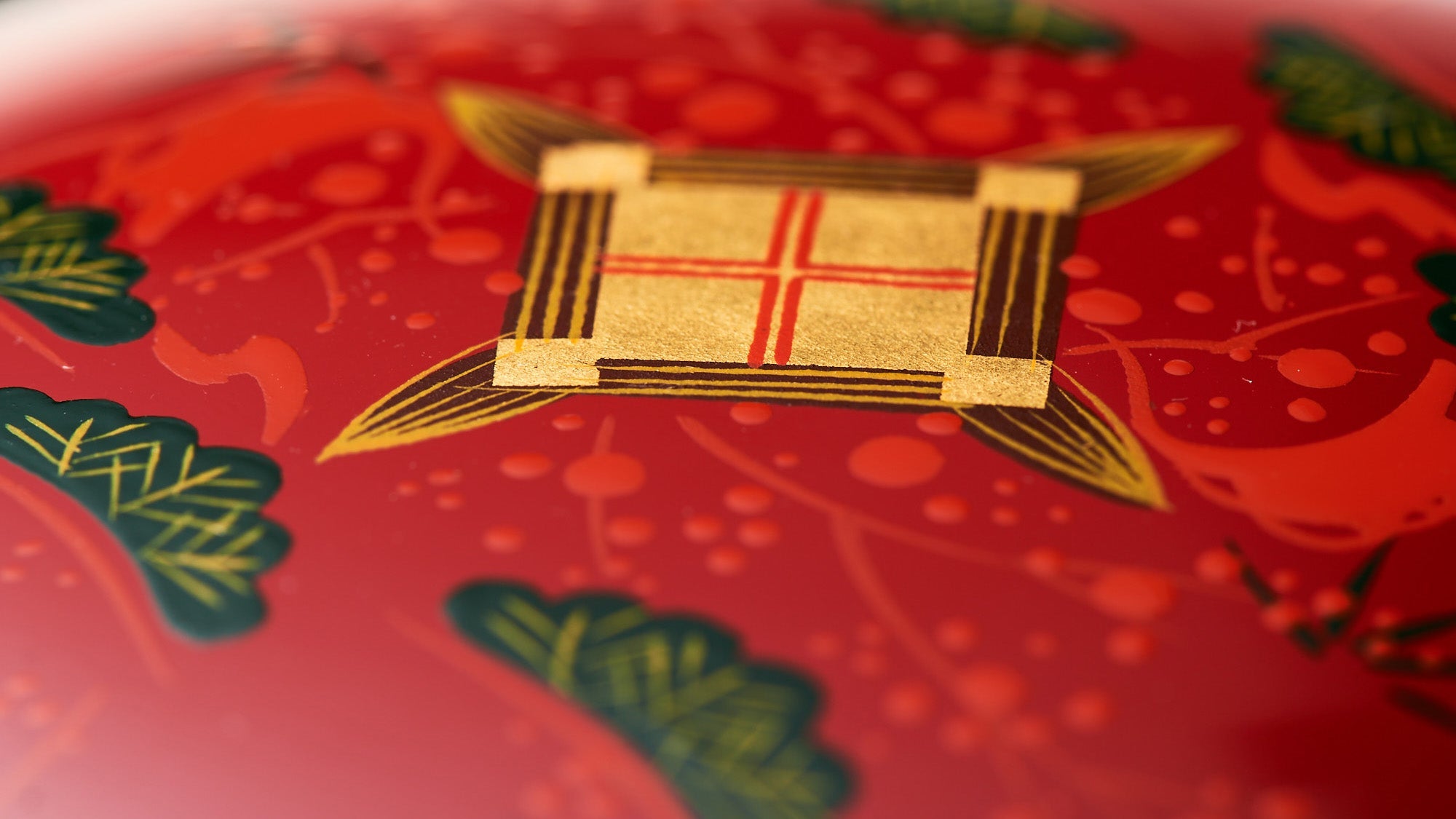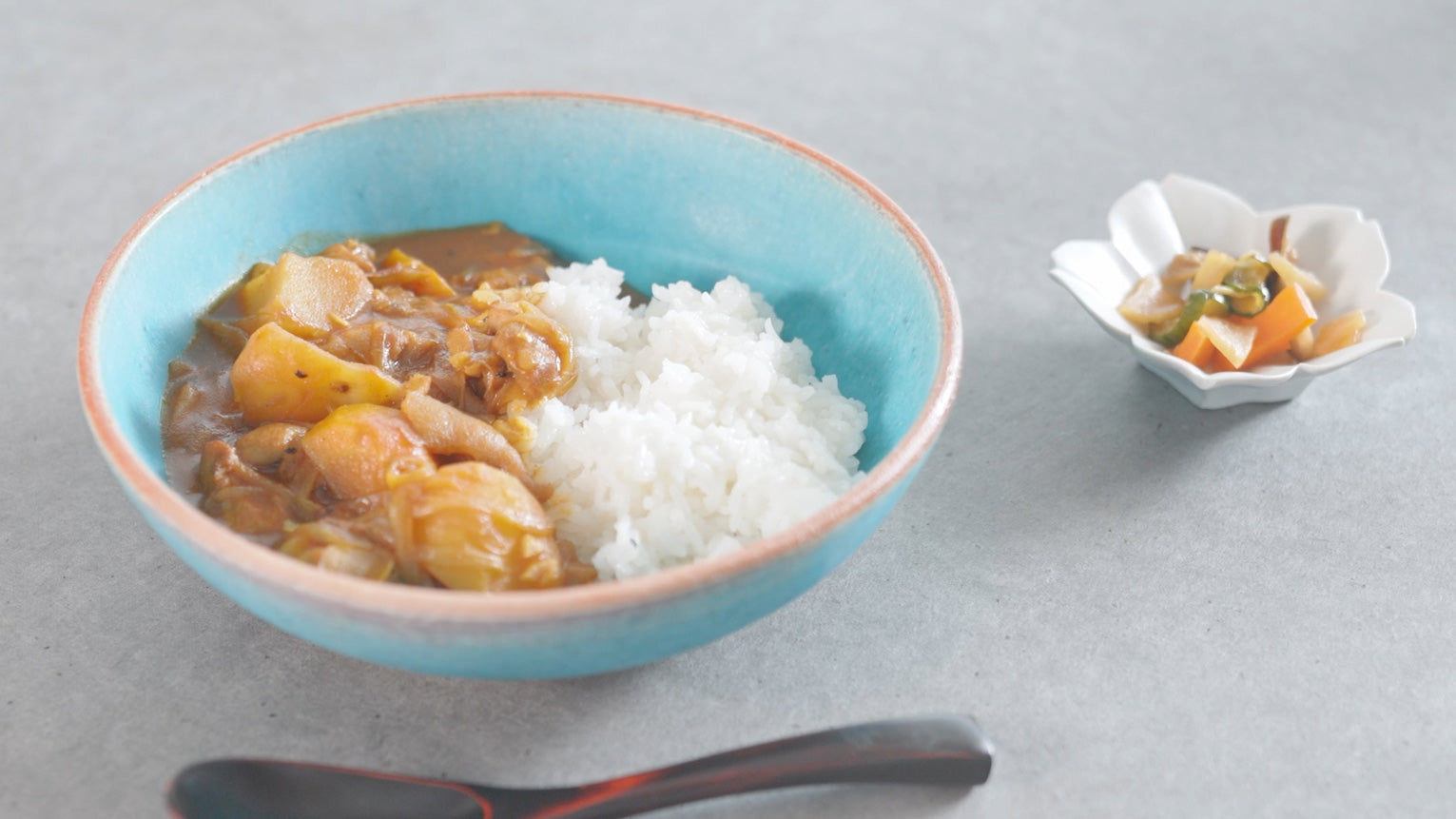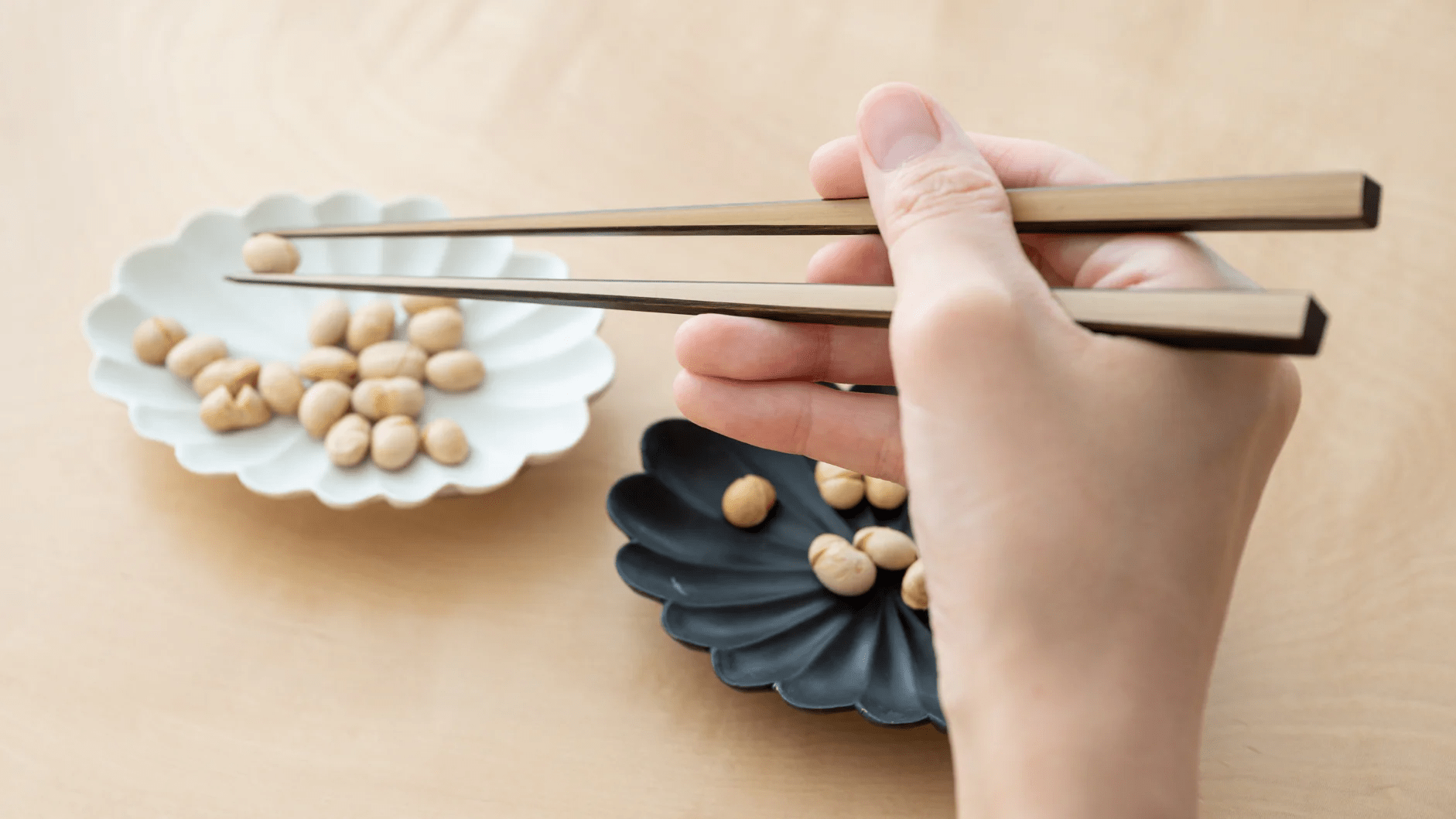
Komatsu Shigeo: A Maki-e Artisan of Stillness, in Gold and Lacquer
Written by Team MUSUBI
Nestled in the foothills of Fukushima Prefecture lies Aizu Wakamatsu, a town where mist lingers over tiled roofs and time moves with the slow rhythm of craft. Known for its deep-red lacquerware and enduring sense of beauty, Aizu is a place where time takes material form, and where every brushstroke holds the memory of generations.
Among those who carry this lineage is Komatsu Shigeo, an artisan of Aizu-e, the region’s distinctive style of full-surface lacquer painting. His works do not dazzle with ornament; they whisper with restraint. Gold leaf and vermilion lacquer meet under his brush like light meeting air—each line deliberate, each curve measured, each bloom alive with stillness.

This time, Team Musubi had the rare privilege of stepping into Komatsu’s studio, where the scent of urushi hangs softly in the air and time seems to slow. Through our conversation, he revealed not only the meticulous processes behind his art, but the philosophy that sustains it—a life devoted to craftsmanship, balance, and the lasting grace of things made by hand.
Table of contents
Roots in Aizu: A Childhood Among Craftsmen
Komatsu Shigeo was born in the old quarters of Aizu Wakamatsu, Fukushima Prefecture, a town steeped in the scent of lacquer and the warmth of handmade work. The seasons there move slowly and distinctly. Winters stretch long, and the air often carries the faint perfume of wood and urushi. The streets are not filled with noise but with the measured rhythm of tools, planes scraping, brushes sweeping, and cloths polishing.

His neighbors were woodturners, painters, and maki-e masters, each living by the steady pulse of their craft. Komatsu’s father was a maki-e artisan, his mother assisted with the family business, and lacquerware was not just part of their livelihood—it was part of life itself.
As a boy, he often wandered through the neighborhood, curious about the crafts that differed from his own family’s trade. “It was fascinating,” he recalls. “Everyone was doing something a little different.” He would linger by open workshop doors, watching hands in motion—one craftsman joining the wooden base of a bowl, another blending rice paste and lacquer into a perfect adhesive.
He went on to explain, “Uwanuri, or the final coating, is the process that gives lacquerware its signature sheen and depth. Without it, none of the decorative techniques that follow would truly come alive.” He recalled that the finishing studio was a world bound by strict discipline; no outsiders were ever allowed inside. Even as a child, he could sense the weight of that unspoken rule, a respect for the space where the final, luminous skin of lacquer was born.
What remains most vivid in his memory is a winter scene: a craftsman standing outdoors, washing freshly polished vessels in freezing tap water, steam rising faintly from his hands. That moment, simple yet unshakable, revealed to the young Komatsu the essence of craftsmanship carried out, devotion expressed through the smallest acts. It was then that he began to understand that lacquerwork was not merely a skill to be mastered, but a way of being—an art sustained by dedication, humility, and the dignity of work done by hand.
Years of Apprenticeship and Artistic Growth
It felt only natural that he went on to enroll in the Crafts Department at Aizu Technical High School. His family’s workshop had already made him fluent in the language of lacquer, its scent, its texture, the rhythm of brush and breath, but school opened a different window. There, he studied synthetic paints, learning to see lacquer not as an isolated craft, but as part of a broader field of materials science and design. “What I learned at school and what I learned at home constantly interacted with each other,” he recalls. “In class, we studied the history of Aizu-style lacquerware, its origins, its traditions, and the philosophy behind it.”
Yet at that time, Komatsu had not fully decided to pursue the path of a craftsman. The turning point came through his uncle’s encouragement: he entered the Kokeisha Yoseijo, the predecessor of today’s Aizushikki Kunrenko (Aizu Lacquerware Training School). It was there that he began from the ground up, moving steadily from basic exercises to the intricate techniques of maki-e. Each exercise was an act of rebuilding, measured, repetitive, and thrilling in its sense of discovery.
It was through a female senior—one of the few women in this school otherwise filled with men—that Komatsu was introduced to Terui Kurato, a celebrated master of maki-e. Under Terui’s guidance, Komatsu began his true apprenticeship. “When I did something wrong,” he says with a laugh, “he wouldn’t say a word, and that told me everything.” Terui never scolded; his teaching was wordless, conveyed through presence and gaze. From him, Komatsu learned that mastery lies not in perfection but in awareness—the ability to see one’s own mistakes and refine them, stroke by stroke.
Later, exchanges with artists from other disciplines broadened his perspective. Seeing the intricacy and restraint in their work made him acutely aware of his own limitations and inspired him to return to the essence of maki-e with renewed appreciation. It marked a quiet turning point in his artistic growth, where learning extended beyond technique into a deeper sense of understanding and reflection.
Gold, Lacquer, and Devotion
What distinguishes Aizu-e is its freedom—its ability to “grow with the form.” Whether painted on a flat surface or a curved vessel, each branch and leaf flows naturally with the shape, creating a rhythm that feels organic rather than imposed.
In his own work, Komatsu continues to draw from the aesthetic of late-Edo Aizu-e, known for its refined lines and the lively motion of its motifs. He keeps a treasured reference book documenting patterns from that period and knows each design intimately. He often returns to its pages for inspiration, weaving subtle variations into his compositions while maintaining the poise of tradition.

As he began to demonstrate his process, Komatsu reached for a plain yet elegant wooden box, his long-used kit of brushes and tools. Inside, each brush was arranged with deliberate intent. The differences in hair length, thickness, and density may seem minute, but for Komatsu, these nuances are what allow him to control the flow of line and texture with precision. Every brush has its purpose: one for tracing the slender curves of a branch, another for dotting soft petals, another for laying down gold powder with a steady hand.


His worktable resembles an artist’s palette more than a craftsman’s bench. The table mottled with layers of color, stands as a silent record of his dialogue with the materials—each test stroke and adjustment a trace of his hands and his thoughts.

When the painting begins, calm settles in, and Komatsu’s focus is absolute. One hand slowly turns the bowl while the other moves the brush with unhurried fluency. Years of repetition have refined his gestures into something almost instinctive. The lines that flow from the tip of his brush are as fine as silk, yet firm and alive. The pigment glides over the glossy black lacquer, catching the light with a soft, liquid shimmer. The dark surface is as still as water, and the golden threads that unfold across it seem to float just above, poised between restraint and vitality. It is less a performance than a conversation between hand and vessel—a moment of poised concentration unfolding before our eyes.

He explains that one of the most challenging techniques is mori-e, the raised-painting method used to make plum blossoms slightly protrude from the surface. A single misjudgment in drying time can cause the lacquer to wrinkle or sink. To avoid that, he adjusts the drying time in response to changes in temperature and moisture, ensuring each flower opens at just the right moment.
“I want these pieces to be used, not just displayed,” he says with a gentle smile. The union of lacquer and gold is remarkably resilient, meant to grow more beautiful with age. For Komatsu, true beauty is not found in flawless perfection, but in what endures: the steady glow that time cannot erase.

The Grace That Remains
Looking back on decades at the bench, Komatsu Shigeo sums up his creed in a single line:
“Whatever the task, do it with attention.”
He tells apprentices the same thing: “If you can’t focus, stop and come back. Never cut corners; carelessness shows in the work.” For him, a piece records more than skill; it registers the maker’s state of mind.

As for the future, Komatsu feels no urge to chase trends or reinvent himself. His aim is simpler: to preserve and refine the techniques that time has tempered. “I don’t make things to suit a particular country or market,” he says.
“I want to make what is uniquely Japanese as faithfully as I can. If people love it, I’m grateful; if not, that’s fine too.”
In his view, true art does not require explanation. It simply abides, like the soft, lasting glow where gold leaf meets lacquer.
Age has dimmed his eyesight a little, but not his dedication. He still works in the studio every day. To him, a craftsman’s life is sustained less by constant breakthroughs than by steady guardianship. There is dignity in that stance: even as time wears at color, the craft holds its sheen.
To younger makers, his message is plain. Teachers can pass on experience and point out the pitfalls, but only resolve keeps a person in the work. In Komatsu’s world, time settles gently on the surface; what remains is not only the refinement of technique, but a calm, enduring grace.
Soft light falls across the unfinished lacquer surface, where layers of gold and vermilion seem to breathe, each reflecting not brilliance, but the persistence of time. Komatsu’s art does not seek grandeur or novelty; it is an act of continual devotion, a lineage of reverence passed silently from one generation of craftsmen to the next.
In an age driven by speed and noise, his work feels almost defiant. It invites us to slow down, to rediscover the beauty of endurance. Beneath the refined maki-e patterns lies more than technical mastery; it holds a craftsman’s conviction: that true elegance and luster are never born of haste, but of the steady heartbeat of the human hand.










Leave a comment
This site is protected by hCaptcha and the hCaptcha Privacy Policy and Terms of Service apply.